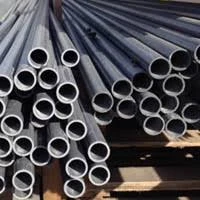
-
 Afrikaans
Afrikaans -
 Albanian
Albanian -
 Amharic
Amharic -
 Arabic
Arabic -
 Armenian
Armenian -
 Azerbaijani
Azerbaijani -
 Basque
Basque -
 Belarusian
Belarusian -
 Bengali
Bengali -
 Bosnian
Bosnian -
 Bulgarian
Bulgarian -
 Catalan
Catalan -
 Cebuano
Cebuano -
 China
China -
 China (Taiwan)
China (Taiwan) -
 Corsican
Corsican -
 Croatian
Croatian -
 Czech
Czech -
 Danish
Danish -
 Dutch
Dutch -
 English
English -
 Esperanto
Esperanto -
 Estonian
Estonian -
 Finnish
Finnish -
 French
French -
 Frisian
Frisian -
 Galician
Galician -
 Georgian
Georgian -
 German
German -
 Greek
Greek -
 Gujarati
Gujarati -
 Haitian Creole
Haitian Creole -
 hausa
hausa -
 hawaiian
hawaiian -
 Hebrew
Hebrew -
 Hindi
Hindi -
 Miao
Miao -
 Hungarian
Hungarian -
 Icelandic
Icelandic -
 igbo
igbo -
 Indonesian
Indonesian -
 irish
irish -
 Italian
Italian -
 Japanese
Japanese -
 Javanese
Javanese -
 Kannada
Kannada -
 kazakh
kazakh -
 Khmer
Khmer -
 Rwandese
Rwandese -
 Korean
Korean -
 Kurdish
Kurdish -
 Kyrgyz
Kyrgyz -
 Lao
Lao -
 Latin
Latin -
 Latvian
Latvian -
 Lithuanian
Lithuanian -
 Luxembourgish
Luxembourgish -
 Macedonian
Macedonian -
 Malgashi
Malgashi -
 Malay
Malay -
 Malayalam
Malayalam -
 Maltese
Maltese -
 Maori
Maori -
 Marathi
Marathi -
 Mongolian
Mongolian -
 Myanmar
Myanmar -
 Nepali
Nepali -
 Norwegian
Norwegian -
 Norwegian
Norwegian -
 Occitan
Occitan -
 Pashto
Pashto -
 Persian
Persian -
 Polish
Polish -
 Portuguese
Portuguese -
 Punjabi
Punjabi -
 Romanian
Romanian -
 Russian
Russian -
 Samoan
Samoan -
 Scottish Gaelic
Scottish Gaelic -
 Serbian
Serbian -
 Sesotho
Sesotho -
 Shona
Shona -
 Sindhi
Sindhi -
 Sinhala
Sinhala -
 Slovak
Slovak -
 Slovenian
Slovenian -
 Somali
Somali -
 Spanish
Spanish -
 Sundanese
Sundanese -
 Swahili
Swahili -
 Swedish
Swedish -
 Tagalog
Tagalog -
 Tajik
Tajik -
 Tamil
Tamil -
 Tatar
Tatar -
 Telugu
Telugu -
 Thai
Thai -
 Turkish
Turkish -
 Turkmen
Turkmen -
 Ukrainian
Ukrainian -
 Urdu
Urdu -
 Uighur
Uighur -
 Uzbek
Uzbek -
 Vietnamese
Vietnamese -
 Welsh
Welsh -
 Bantu
Bantu -
 Yiddish
Yiddish -
 Yoruba
Yoruba -
 Zulu
Zulu
Innovative Dual Lamination Solutions for Enhanced Performance and Durability in GRP Products
Understanding GRP Dual Lamination Products Benefits and Applications
In today's industrial landscape, materials and manufacturing processes are vital in determining the efficiency, cost-effectiveness, and sustainability of production. One such innovation that has garnered attention is the GRP (Glass Reinforced Plastic) dual lamination product. This advanced composite material leverages the strengths of both plastic and glass fiber, producing a versatile and durable solution for various applications.
What is GRP Dual Lamination?
GRP dual lamination refers to a composite material that combines two layers of laminated glass with a core of glass-reinforced plastic. The process involves first creating a base layer of glass fiber, which is then laminated with resin to form a strong, lightweight, and water-resistant material. The dual lamination technique enhances the durability and strength of the product, making it ideal for use in demanding environments.
This material offers several unique properties, such as high tensile strength, corrosion resistance, and excellent thermal insulation. The dual lamination process not only reinforces the structural integrity of the material but also ensures that it can withstand harsher conditions than traditional plastics.
Benefits of GRP Dual Lamination Products
1. Durability One of the principal advantages of GRP dual lamination is its exceptional durability. The glass fibers provide enhanced strength while the plastic's versatility allows for resistance against weathering, UV radiation, and chemicals.
2. Weight Consideration Compared to metals, GRP is significantly lighter, making it easier to transport and handle. This characteristic is particularly beneficial in applications where weight reduction is critical, such as automotive and aerospace industries.
3. Corrosion Resistance GRP dual lamination products are inherently resistant to various corrosive agents, making them suitable for use in marine environments, chemical processing plants, and other scenarios prone to corrosion.
grp dual lamination product

5. Versatility This composite material can be tailored to meet specific application requirements. It can be molded into various shapes and sizes, ensuring it can cater to diverse industrial needs.
Applications of GRP Dual Lamination Products
The multifaceted nature of GRP dual lamination products allows them to be used across numerous sectors
- Transportation In the automotive industry, GRP is used for body panels and interior components, offering lightweight designs that improve fuel efficiency without compromising safety.
- Construction The real estate sector utilizes GRP products for facades, roofing, and interior finishes, taking advantage of their aesthetic appeal and durability.
- Marine GRP's resistance to saltwater corrosion makes it an ideal choice for boat building, hulls, and other marine applications.
- Electrical In electrical insulation, GRP dual lamination products serve as protective enclosures, ensuring safety and reliability in electrical systems.
Conclusion
As industries continue to evolve, the demand for advanced materials like GRP dual lamination products is on the rise. Their combination of strength, durability, and versatility makes them a standout choice for a myriad of applications. With ongoing advancements in manufacturing technologies, the future of GRP products looks bright, promising to deliver even more innovative solutions to meet the needs of a dynamic marketplace. Whether for transportation, construction, or marine applications, GRP dual lamination continues to play a crucial role in enhancing the performance and reliability of products across various sectors.









